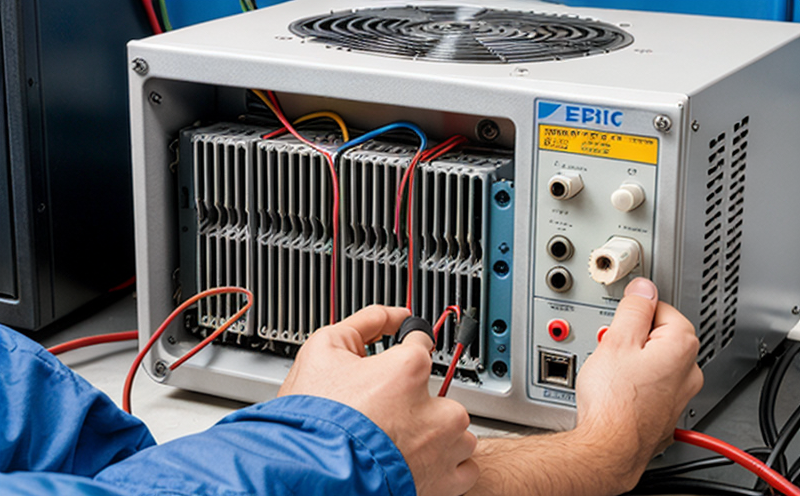IEC 60068 Environmental Testing of Electrical Systems
The IEC (International Electrotechnical Commission) Standard 60068 is a comprehensive suite of tests designed to evaluate the environmental robustness and durability of electrical systems. This service focuses on testing electrical components, assemblies, and subsystems under extreme environments as specified in this standard. The primary objective is to ensure that these systems can perform reliably even when subjected to harsh conditions such as high temperatures, low temperatures, humidity, salt spray, vibration, and shock.
The IEC 60068 tests are critical for the marine & ship equipment sector where electrical components must withstand severe environmental stress. For instance, a ship's navigation systems or communication devices need to function correctly despite the challenging ocean environment. The testing process involves exposing specimens to various simulated environments that mimic real-world conditions. This ensures not only the longevity of the product but also its reliability and safety.
When performing these tests, it is essential to follow strict procedures outlined in IEC 60068. Specimens are prepared according to the specific requirements dictated by the standard. For example, a specimen may be an electrical relay used in shipboard power distribution systems or a motor for critical propulsion equipment. The testing apparatus includes chambers capable of simulating temperatures ranging from -55°C to +125°C, humidity levels up to 98% relative humidity, and vibration tables that replicate sea state conditions.
After the tests, detailed reports are generated summarizing the results. These reports include data on how well the specimen performed under different environmental stresses. Compliance with IEC standards is crucial for product certification in many countries, ensuring that equipment meets international quality and safety requirements. This testing process also helps manufacturers identify potential design flaws early in the development phase.
The rigorous nature of these tests ensures that electrical systems used in marine applications are robust enough to operate efficiently under challenging conditions. Compliance with IEC 60068 helps manufacturers meet regulatory requirements, enhance brand reputation, and gain customer trust by demonstrating commitment to quality and safety.
Competitive Advantage and Market Impact
By ensuring compliance with IEC standards, we help our clients gain a competitive edge by meeting international quality and safety requirements. This enhances brand reputation and customer trust.
The rigorous testing process helps identify potential design flaws early in the development phase, reducing costly rework and improving product performance.
Our services contribute significantly to market success by ensuring that marine equipment meets stringent environmental standards. This is particularly important as regulations become more stringent globally, and consumers demand higher quality and reliability from products used in harsh environments.
Compliance with IEC 60068 also opens up new markets for manufacturers whose products can be certified to these international standards. It ensures that electrical systems are robust enough to operate reliably under challenging conditions, which is critical in the marine industry where equipment failure could have severe consequences.
Use Cases and Application Examples
Testing of navigation devices such as GPS units, radars, and sonar systems used in ships to ensure they operate correctly under temperature extremes, humidity, salt spray, and vibration.
Evaluation of power distribution systems for reliability in harsh marine environments. This includes testing substations, circuit breakers, and other critical components that must function without failure.
These tests are essential to ensure that electrical systems used in marine applications can withstand the rigors of ocean travel while maintaining high levels of performance and safety. By subjecting these systems to realistic environmental stresses during development and production, manufacturers can identify and address potential issues early, enhancing product quality and reliability.





